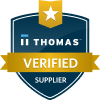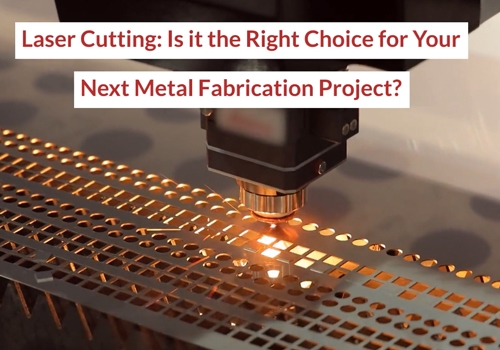There are many techniques for cutting and shaping metal, but more and more manufacturers are turning to laser cutting for sheet metal fabrication. This advanced technology allows for precise cuts and repeatability at rapid speeds, helping reduce costs and increase production. When determining if laser cutting is right for your metal fabrication project, it’s important to understand its many benefits.
Laser Cutting Metal Fabrication Advantages
The right cutting technique for any given project will depend upon the type of material, the complexity of the design, the environmental conditions the end product will face, your budget, and more. The advantages of laser cutting sheet metal make it an ideal choice for many projects:
High-Quality Precision
Laser cutters create clean edges without making contact with the metal. Because the heat zone is so small, there’s no burning and minimal warping. This allows for extreme, repeatable precision with tight tolerances even for complex projects.
Speed, Efficiency, and Automation
Laser cutters are CNC automated. This not only means the cuts are more precise than they would be with a manual process, but it also means the process can continue day and night for shorter lead times. Laser cutting sheet metal is a fast process, with the final speed dependent upon the thickness of the material and the complexity of the cuts. In some cases, multiple lasers may be used together to increase speed and efficiency.
Versatility and Resourcefulness
Cuts, holes, slots, tabs—laser cutting can do it all without interruption, making even the most delicate designs easy to fabricate. Laser cutting fabrication is used to create components of all sizes and order volumes, including prototypes and ongoing industrial orders.
Competitive Pricing
The automated nature of laser cutting reduces labor costs, material waste, and the risk of error. The speed and precision allow for short lead times, further improving your bottom line. Laser cutting is competitively priced with other fabrication techniques, especially when you consider the time savings and other advantages of the process.
Laser Cutting vs Plasma Cutting
Laser cutting is often compared to plasma cutting, and each has its advantages in certain situations. Plasma cutting uses a CNC-controlled hot plasma stream to burn through a conductive material, while laser cutting uses an intense light beam to do the same thing—but the material does not need to be conductive.
While plasma cutting machines are often simpler to operate and less expensive, this process often results in thicker, less precise cuts that will require secondary finishing processes. With laser cutting, you can achieve higher precision, speed, and efficiency when working with large, thin sheets of metal.
Laser Cutting Metal Fabrication Services from Accubeam
At Accubeam, we offer laser cutting metal fabrication for ferrous and non-ferrous metals, including aluminum, steel and steel alloys, bronze, brass, and titanium, working with tolerances of +/- .002 inches. With years of experience, specialized tooling, high-volume capabilities, and additional services like in-house managed inventory and drop shipping, we can meet the needs of clients in a range of industries, including:
- Aerospace
- Automotive
- Marine
- Electronics
- Military
- Medical
- Industrial
- Signage
- Furniture
We’re proud to lead the industry with innovative tooling and top-of-the-line equipment and technology, and we’re committed to delivering exceptional results for our clients. No matter the size or scope of your project, we have the expert team in place to meet your needs. Contact us to learn more about the advantages of laser cutting sheet metal fabrication, or request a quote for your project.






